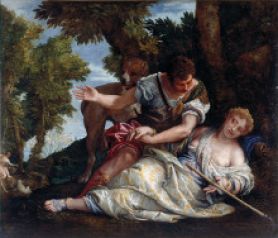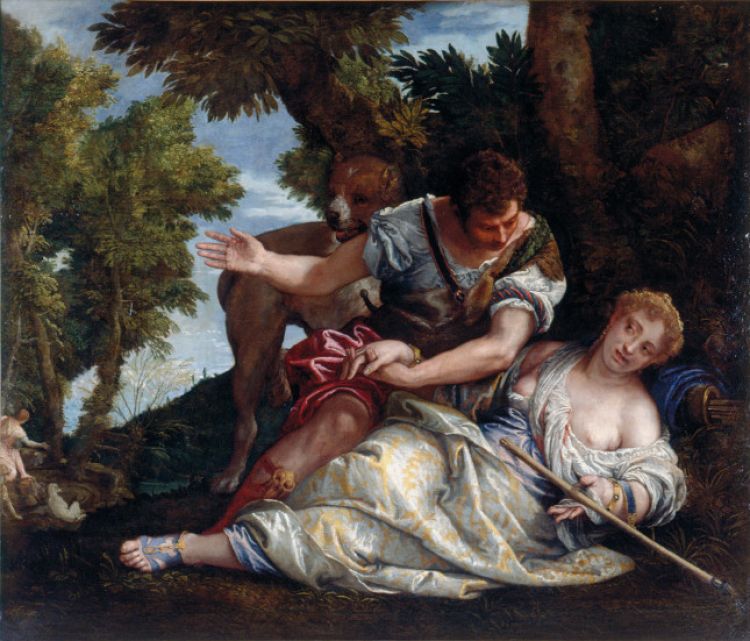Cephalus and Procris

Veronese was with Titian and Tintoretto, one of the best painters of Venice in the middle and late sixteenth century.
His work Cephalus and Procris was purchased with its counterpart, Venus and Adonis asleep in 1641 in Venice by Velazquez for his king. Around 1810, in the turmoil of the First Empire, the two paintings were separated. The second is now in the Prado Museum in Madrid. The paintings complement each other through a common theme: hunting.
Let’s go back to the Metamorphoses, Ovid's narrative. Procris decides to follow her husband Cephalus grand-son of the wind god Aeolus, through the forest. Cephalus - she is sure - is unfaithful to her when he goes on his solitary hunts with The Breeze. The unfortunate husband hears a slight rustle, launches his magic spear, the very same one that Procris gave him. He hits his wife in the chest. “I found her half-alive”, he says, “her clothes disheveled, stained with her blood, and -- ah, what misery! -- she was trying to pull from the wound, this spear, her gift to me.”
Procris dies, but not before Cephalus reassures her of his fidelity.
To represent the mask of death, the artist had to renounce his impassive elegance and disfigure the features of the female face. This final scene of the whole event is set at sunset. The colours chosen accentuate the fateful character of the scene. The foliage underlines the sadness, while in the distance, we see hunting companions and new horizons to which Procris is already heading.
